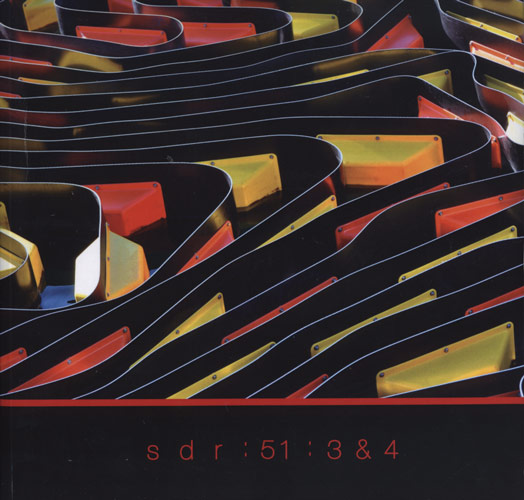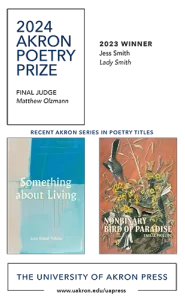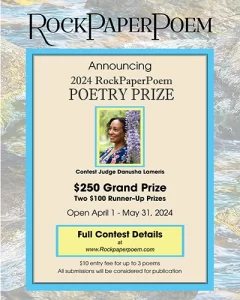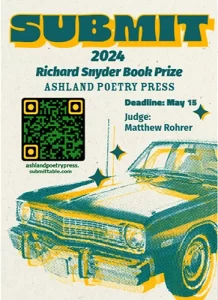South Dakota Review – Winter 2015
What stuck out to me the most in this issue of the South Dakota Review was the poetry section, not only because I am a poet by nature, but because of the depth and breadth of range from ghostly lines to historical narratives. The poetry section begins with “Black Tigers” by Angela Penaredondo. Borrowing its epigraph from Wole Soyinka’s “Civilian and Soldier,” “Black Tigers” follows the life of a young female civilian soldier and the everyday preparations of dying. In the poem, she “shall be severed. Spread with voracity, / then refined to seeds and meat. / This land. All hunger girls.” What stuck out to me the most in this issue of the South Dakota Review was the poetry section, not only because I am a poet by nature, but because of the depth and breadth of range from ghostly lines to historical narratives. The poetry section begins with “Black Tigers” by Angela Penaredondo. Borrowing its epigraph from Wole Soyinka’s “Civilian and Soldier,” “Black Tigers” follows the life of a young female civilian soldier and the everyday preparations of dying. In the poem, she “shall be severed. Spread with voracity, / then refined to seeds and meat. / This land. All hunger girls.”
In her poem, “What is the Balance of What it Means to be Without a Mother,” Megan Burns explores the depth of grief from loss:
i wander a numb ghost
of my former self,
[ . . . ]
i learn you resolve to be resolved
that sorrow has no bottom.
In “I Say to the Other,” Burns explores loss through love; “not up from the underworld as though love beckons you, practice an unhearing.”
Paisley Rekdal poems the story of “Olive Oatman in Texas Sherman, 1865,” about a girl who is lost to the Yavapai and raised among them until her brother finds her years later with the tribe’s markings on her face, “feathered into my chin like newsprint / dropped in water.” Olive is “amazed anew /at how a person can be so overwritten,” every time she sees the shock of her own face in a mirror.
This issue features four poems by Noah Falck, one of which is only a sentence long. In “Poem Excluding Beauty Pageant” Falck captures the moment “when you left the / country of who you always thought you / were.” In “Poem Excluding Astrology” Falck puzzles, “like the hierarchy of / pedestrians everything was a riddle.”
Alex Lemon pens “Into the Dark Circle of Nothing that is a Freshly Dug Hole,” observing “How close the dirt / Kisses when facedown.” Laura Carter, in her poem, “Essay: Steel, Glass, and Concrete,” engages the intimate relationship between person and city, stating, “That was Browning, Porphyria’s lover wrapped / around edges of a story / and a mirror unshorn. . . .”
Completing the poetry section, and the magazine, are three poems by Purvi Shah. The poems, as part of a series, focus around the story of Saraswati. In “Saraswati—rendering—between sparrows,” “Every house shares a haunting” and “When the bedroom plaster parts, clusters / of dried bruise—your tongue remembers. . . .” In the second poem, “Saraswati dozes, two hands as a pillow beneath her head” the narrator hears the “Noise of her bangle at night. Secrets / the days, whispers surprise to sunrise.” Finally, in the last poem, “Beating her soiled clothes, Saraswati reaches God and bursts into tears,” the narrator closes, “you feel // every destination but perfection in the lifetime, your sore /skin as moon origin, as bountiful // contamination.”
In nonfiction, Lee Ann Roripaugh kicks off the issue with her essay “Scourge,” iterating the many ways in which one thing tries to eradicate another, whether it is a fictional militant organization such as Hydra, a plant species introduced to foreign soils such as the tumbleweed, or insects like silverfish who are “quietly writing their way through the cantos, making erasures in the canon.”
Karen Salyer McElmurray pens a guileless short essay about the struggles of colorectal cancer in her piece “Elixir,” in which she measures, “608,000 deaths. The body’s potential.” McElmurray sheds light on the peculiar details of cancer survival that are unexpected, uncommon, and unknown.
Of course, no issue is without its fiction section. In Mirri Glasson-Darling’s story “The Night We Saw a Car on Fire,” the reader trails three friends during a drunken night out and the events that lead up to the burning car. When the friends finally stumble upon the torched automobile it is like “the car had always existed this way: a torch with no end or origin, burning forever on a back-drop of black mountains, Prometheus of absolution.” Glasson-Darling’s story touches on the human desire to always know the back-story, the origin of things, much like the story itself acts as the origin of the event it comes to describe.
In Karen Heath’s “Hotline,” we observe three workers at a life crisis hotline, where the narrator “wondered what it was—pills, gun, razor blades against tender skin. What was it, this impulse to have someone else, a stranger even, hear your last moments?”
The Kringles, The Angel of Death, the Heat Miser and the Cold Miser, all make appearances in this issue of The South Dakota Review, making it the perfect companion for those long summer nights filled with potential for life and beyond.
[www.southdakotareview.com]





